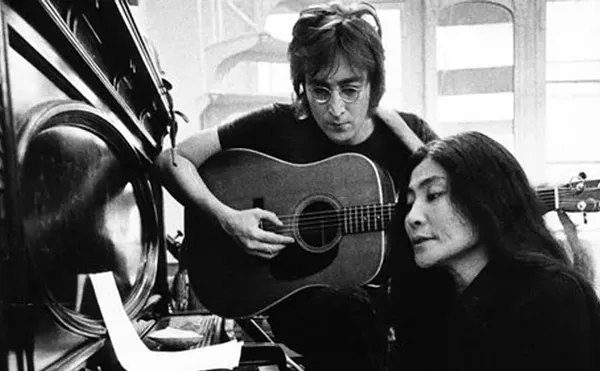
Audio By Carbonatix
[
{
"name": "GPT - Leaderboard - Inline - Content",
"component": "35519556",
"insertPoint": "5th",
"startingPoint": "3",
"requiredCountToDisplay": "3",
"maxInsertions": 100,
"adList": [
{
"adPreset": "LeaderboardInline"
}
]
}
]
Back in the days of SCTV, John Candy and Joe Flaherty played Big Jim McBob and Billy Sol Hurok, a pair of redneck film reviewers who would give the thumbs-up to any movie that had something get “blowed up, blowed up real good.”
Jim and Billy would love Steamboy.
Director Katsuhiro Otomo’s groundbreaking Akira was the first, and arguably most influential, big-budget Japanese anime; he now emerges after 16 years with this over-the-top “steampunk” (think cyberpunk, but in the 19th century) epic. Touted as the most expensive anime ever made, Steamboy impresses, deafens and bores its audience in equal doses.
The year is 1866 and England’s industrial revolution is in full swing. Ray Steam (voiced by Anna Paquin), the youngest member in a family of brilliant inventors, finds himself caught in a battle between his grandfather, Lloyd (Patrick Stewart), and his father, Eddie (Alfred Molina), over the fate of the “steam ball,” an invention with quasi-nuclear powers.
With London’s Great Exhibition as his backdrop, Eddie intends to unveil the awesome power of his “steam tower,” a gargantuan battle station with a fleet of futuristic military vehicles. Unbeknownst to him, his financial backer, the greedy O’Hara Corporation (American, of course), intends to sell his inventions to the highest bidder. Grandpa Lloyd is determined to thwart his son’s plans and deprive both the Americans and the Brits of this dangerously unstable device.
As he demonstrated in Akira, Otomo is deeply concerned with humankind’s misuse of science and technology. But unlike that film, Steamboy does nothing meaningful with the premise. Otomo never once explores the personal implications of emerging technology and quickly abandons both story and character development in favor of visual spectacle.
After its clumsy setup, Steamboy becomes a ridiculous succession of ever-more spectacular action scenes, peaking with 40 minutes of thundering explosions, bickering characters and wholesale destruction.
The animation, however, is staggering in its attention to detail and flawless in its execution. Every frame is packed with sumptuous backgrounds and painstaking detail. The steam tower is an impressive maze of pipes, gears, cogs and rivets that bursts from the screen. Otomo’s steam-powered world is magnificently realized, with da Vinci-inspired flying machines, fantastical tractors and submarines.
And yet, the film’s remarkable reinvention of Victorian England is little more than a novel setting for things to “get blowed up.” Without a decent story or protagonist, Steamboy’s impressive visuals get lost in the Sturm und Drang of boredom.
Showing at the Main Art Theatre (118 N. Main St., Royal Oak; 248-263-2111).
Jeff Meyers writes about film for MetroTimes. Send comments to letters@metrotimes.com.





